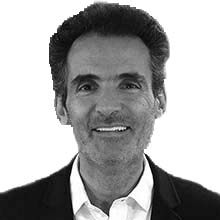Lots of great people sometimes make decisions that turn out to be bad decisions. It’s not a matter of who takes the decision, it’s more about how the decision is made.
These decisions are actually impacted by biases that we all have and that lead us to deviate from rationality. In this collection, Olivier Sibony shares some of the insights that behavioral science has recently produced about overcoming these biases. Thanks to his very practical tips about building processes that result in better decisions, you will make better, smarter choices.
How to Make Better Strategic Decisions
The “war-gaming” technique
Using the example of Procter & Gamble, Olivier Sibony shows how the technique of “war-gaming” can be used to consider the potential impact of a strategic plan.
Overcome the planning fallacy
Projects of any kind usually overrun in terms of costs and time. Olivier Sibony reveals why this is a rule rather than an exception and explains how you can do more accurate forecasting to avoid this.
Re-anchor your next budget meeting
There is often a lot of inertia in budget and resources allocation meetings because these are strongly skewed by an anchor, a psychological phenomenon that makes a number stick in the mind of participants and influence their decisions. Olivier Sibony reveals how you can overcome this bias with the re-anchoring technique to gain more flexibility and challenge the status quo.
Don’t fall victim to bidding fever
Through a story about the acquisition of a major French company, Olivier Sibony shares his insights into how you can prevent “bidding fever” when you are emotionally engaged in making business decisions.
Better a pre-mortem than a post-mortem
After any surprising turn of events, a few individuals will claim that the evidence was there all along and the outcome could have been predicted. How can you give these people an opportunity to speak up before the event? Olivier Sibony introduces the pre-mortem technique and reveals how it has the capacity to let you anticipate, and therefore prevent, disasters.
Widen your options to make better decisions
When we have a decision to make, we often tend to adopt a binary mode and give ourselves only two options to choose from, neither of which may be the ideal solution. Olivier Sibony offers tips on how you can widen your options and generate creative ideas in order to make smarter decisions.
Best practices: handle with care!
Using the example of “forced ranking”, a technique famously used by General Electric and emulated by many other companies, Olivier Sibony explains the dangers of copy-and-pasting best practices and reveals the best way of taking inspiration from other companies.
Never ask a barber if you need a haircut
With this quote from the famous business magnate Warren Buffet, Olivier Sibony illustrates how making sure you hear both sides of the story can lead to better decision making.
The anti-portfolio technique
With experience comes better decision making, but that same experience can also bring an over-confidence that is counterproductive. In this videocast, Olivier Sibony explains why keeping a record of your mistakes can help you to acquire the humility that is necessary for great decision making.
An objective test is a winning test
Using the example of a multinational retailer, Olivier Sibony offers valuable insights into how you can use the testing process as a learning experience, even if the tests ultimately end in failure.
Preventing groupthink
Through the example of the 1961 Bay of Pigs invasion, Olivier Sibony explains why group dynamics can sometimes lead to groupthink and very poor decisions, and reveals what you can do to overcome this phenomenon.
Overcoming confirmation bias
Through the story of the OJ Simpson trial, Olivier Sibony explains why people tend to hear only what confirms their beliefs and ignore what contradicts them. This is what we call confirmation bias. Find out what Olivier Sibony recommends we do to fight this bias.
Is what you see all there is?
Discover what Daniel Kahneman, the famous psychologist calls WYSIATI, for “what you see is all there is”. It’s the natural tendency we have to look at what is available, what is in front of us when we make an important decision. You’ll learn how you can have a bigger picture about the things that you don’t see but that are equally or more important to the decision at hand. A marketing message has 2 outcomes: breaking through the clutter of information and being powerful enough to change or to reinforce the perception that people have of your product. In this Quick Win, you’ll discover different ways to appeal to your consumers.
 Olivier Sibony is a writer, educator and consultant specializing in strategy, strategic decision making and the organization of decision processes. Olivier spent 25 years as a consultant, partner and director in the Paris, New York and Brussels offices of McKinsey & Company. As an affiliate professor at HEC Paris, Olivier teaches Business Strategy and Coporate Strategy. Olivier’s primary research interests include the effect of heuristics and biases in strategic decision making and procedures to improve the quality of decisions.
Olivier Sibony is a writer, educator and consultant specializing in strategy, strategic decision making and the organization of decision processes. Olivier spent 25 years as a consultant, partner and director in the Paris, New York and Brussels offices of McKinsey & Company. As an affiliate professor at HEC Paris, Olivier teaches Business Strategy and Coporate Strategy. Olivier’s primary research interests include the effect of heuristics and biases in strategic decision making and procedures to improve the quality of decisions.